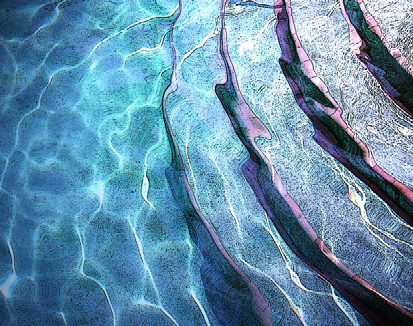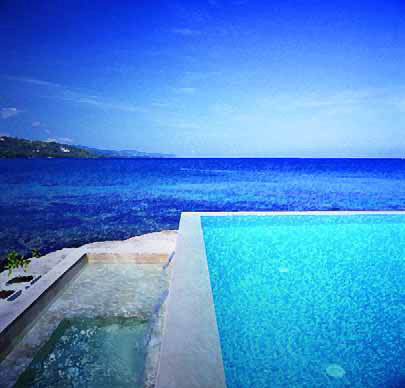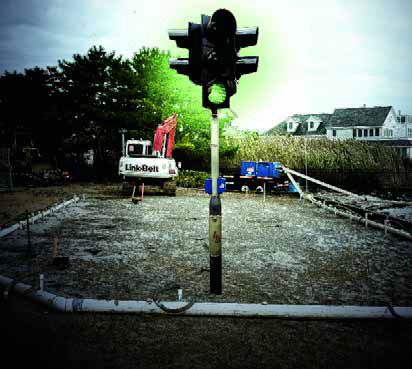Pools & Spas
As milestones go, the project depicted in these pages has been a big one for me - and for lots of other people as well. The grand estate with its outsized home is located in the countryside near Hanover, Pa., a remote setting that offered a set of challenges that has in many ways redefined what is and isn't possible in a whole region when it comes to watershape design, engineering and construction. A full two-and-a-half years in the making (a period broken up, of course, by stretches in which there was no activity on site), this stands as one of
When you work with any type of concrete, there are right and wrong ways to do things - basic issues of workmanship that really do determine whether a structure will be reliable or not. In the case of swimming pools and spas built using pneumatically applied concrete - either shotcrete or gunite - there's a presumption in structural design that the concrete will cure to the strength specified, which, in the case of pools and spas, is typically 2,000 pounds per square inch. If that's not the case, these structures do not meet their specifications and may be subject to failure as a result. To achieve that desired level of strength, the concrete must be
Water is one of the few artistic media that has the ability to define the architecture of human emotion. In all its various forms, it has affected us in profound ways since the dawn of our species, generating powerful feelings and the sense that we are somehow transformed when we're in its presence. As watershapers, we have an ability to use that long anthropological and cultural heritage to our advantage and can actually change the world: The spaces we create will, if done well, generate experiences so powerful that all who enter these environments will forever be changed by the encounter. I see this as both a wonderful opportunity and a solemn obligation. We can take the rich history of water and all its cultural reverberations and essentially use this symphony of tradition and creative impetuosity to compose new experiences for everyone who sees our work. If it's our intention to change the world for the better - something I personally have always held in mind - we do our best when we base our work on traditions assembled throughout human history. Working in that context, we not only gain access to the insights of the geniuses who have gone before us but also
In a couple of my recent "Details," I've discussed the early stages of a wonderful project located on the waterfront of Long Beach Island, N.J. As is the case with many top-level jobs, this one required a great deal of work in the early going to make sure we were set up for complete success once the installation process was under way and the pool, spa and surrounding structures began to come together. Although the pool in question is a simple rectangle designed to function mainly as a subtle and elegant reflective surface, there are certain features within the "shape" of the shell that make it something special - and particularly relevant to how the clients
It's easy to talk about watershapes and the creative and business philosophies that drive success, but to borrow a phrase: The proof is in the pool. In other words, it's one thing to talk about doing a good job, but it's another to step up and do it. The dynamics of that success are unusually complex when you participate in a project as the member of a team. As a case in point, I'll return to a semi-public watershape I first mentioned in my March 2006 column: It's now complete and is one of which I'm particularly proud. Located in Jamaica near Montego Bay at a property known as the Round Hill Hotel & Villas, it was a special sort of commercial project in that, being built outside the United States, it wasn't subject to
In the design and construction of any watershape, there are a number of points in the process where you can see big differences between the way custom designers and contractors do things and the way production/volume-oriented companies go about their business. From first conversations with clients straight through to commissioning the system and turning it over to the homeowners, it's easy to spot these distinctions and define key differences. To illustrate just one of these areas, let me discuss the case of the permitting phase for the project on Long Beach Island, N.J., I began covering two issues ago. What's involved here is a cluster of issues that occurred more or less simultaneously in the project's early going. The elements of this cluster may not seem directly related to one another, but
In most projects, great work requires the watershaper's personal understanding of who the clients really are, deep down. That doesn't mean we have to become our clients' best friends or marry into their families. Rather, creating watershapes at the highest level involves a different kind of relationship, one in which a shared vocabulary and common vision develop through discussions of water, stone, art, plants and the orchestration and staging of experiences that will occur in given spaces. Take the project covered here as an example: The scope of the work, an unlimited budget and a mandate for the highest possible levels of quality were enough on their own to force us to explore the limits of our skills and creativity. More important from our perspective, however, is that we
The history of modern swimming pools really dates back just a hundred years or so. Yes, there are examples of pools, baths and other watershapes from the distant past, but the swimming pool as we know it is something that truly emerged during the 20th Century, mostly after World War II. Before then, there were probably no more than 50,000 pools built in all of the United States - and most of those were seen as something quite special for their time. Nowadays, we're far enough into the development of "modern" swimming pools and other watershapes that a small number of "antique" pools have been declared historical landmarks, with those at Hearst Castle being
When asked what an "optical physicist" does, I sometimes reply that I'm basically a professional choreographer. What I choreograph, of course, is not lithe dancers in leotards and toe shoes, but rather the countless invisible balls of energy whose source, directly or indirectly, is our sun. That's a colorful description, but it accurately reflects the fact that I've spent my entire professional career coaxing, urging, manipulating and orchestrating light in a completely conscious manner with tools both simple and complex. Armed with a liberal arts education and majors in art history and American studies, I founded an industrial-laser company in 1983 and spent the next 18 years learning how to choreograph balls of energy into extremely precise line dances. There was nobody out there to teach us
Recent times have seen the introduction to the pool/spa industry of a new breed of hydraulic pumps that use what is known as 'variable frequency drive' technology. Here, watershaper, hydraulics expert and Genesis 3 co-founder Skip Phillips describes why he believes these devices, which have been used successfully for years in other industries that demand hydraulic efficiency, represent the future for pools, spas and other watershapes. For all the progress made in recent years to change the nature of the game, to this day I still see situations in which pumps, filters and other system components for pools, spas and other watershapes have, hydraulically speaking, been completely






















